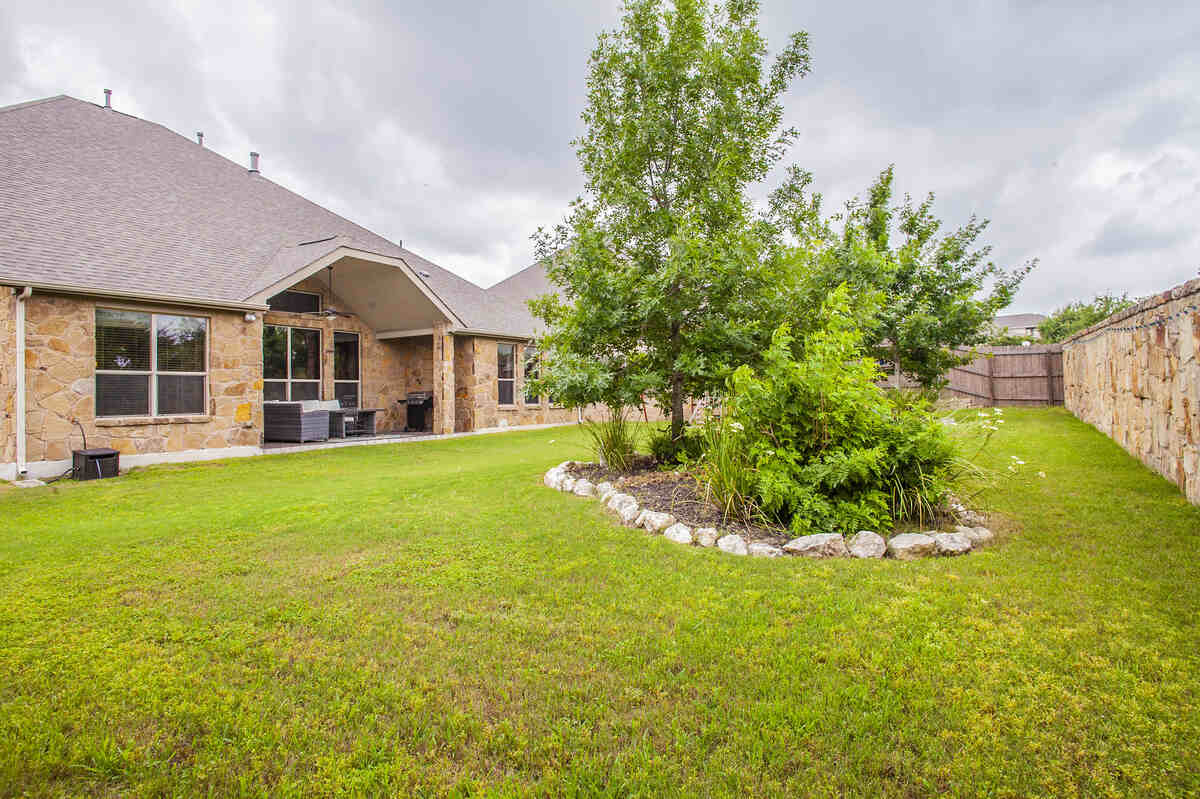
What are the best grass types for San Antonio? We’ve got six warm-season grasses that hold up against Central Texas’s extreme heat. Not sure which is the best fit for your home? We’ve done the work for you with our guide on how to choose the best warm-season grass for your lawn.
Bahiagrass
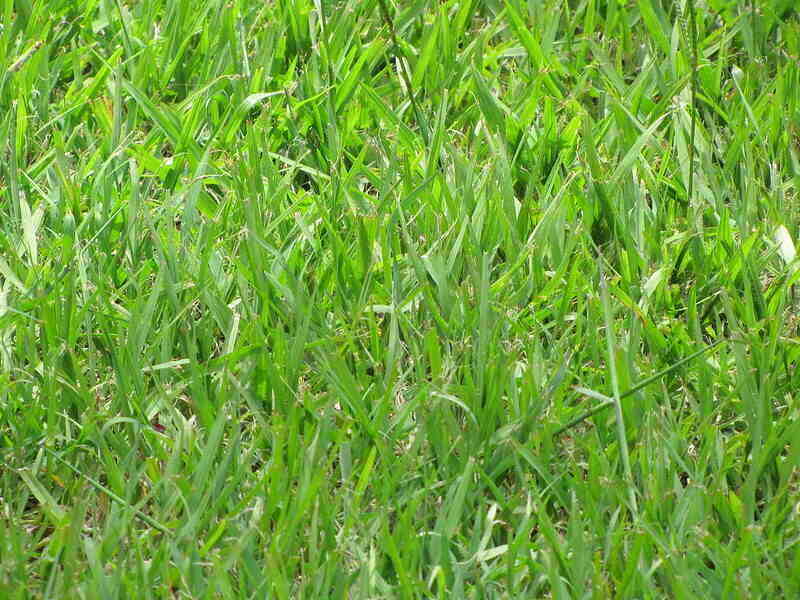
Photo Credit: Forest and Kim Starr / Flickr / CC BY 2.0
Typically grown in the southernmost states, bahiagrass is known for growing in difficult soil. With a deep, thick root system, it grows well in sandy environments and adapts easily to clay. This is a plus for San Antonio homeowners because sand and clay are the two most common soil types in this city.
A warm-season grass, bahiagrass thrives in full sun and Central Texas’s high heat. This turf has a high drought tolerance and a low need for watering, making it ideal for lawns without an irrigation system. Bahiagrass quickly recovers from drought with irrigation, but be careful not to overwater, which will weaken the root system.
Bahiagrass prefers mild winters and is one of the most pest and disease-resistant grass types. Although it is not tolerant of shade, it typically endures better than bermudagrass and tolerates poor drainage. This grass grows in flat spiky leaves and is not aggressive.
Flower bed invasion and thatch are not a concern, but weeds may become a problem. Bahiagrass is a low-maintenance grass that reseeds itself and only requires mowing every seven to 14 days. Traditionally used as a pasture grass, it tends to be less thick and attractive than some other grass types but is relatively tolerant to traffic.
- Classification: Warm-season grass
- Spreads by: Rhizomes
- Shade tolerance: Low
- Drought tolerance: High; It rebounds well with watering, but don’t overwater.
- Traffic tolerance: Moderate
- Maintenance needs: Low; Bahiagrass seeds itself. It requires little irrigation and fertilization, doesn’t form thatch, and doesn’t tend to invade flower beds. This turf is resistant to drought, pests, and disease but will likely require weeding. The mowing recommendation is once every seven to 14 days.
- Recommended mowing height: Ideal grass height is 3-4 inches.
Bahiagrass Quick Guide
Pros
- Low maintenance and reseeds itself
- Grows in San Antonio’s sandy and clay soil
- High drought tolerance, good for lawns without an irrigation system
- Among the most resistant to pests and diseases
- Adaptable and moderately tolerates cool weather and traffic
Cons
- Low shade resistance
- Not as thick and attractive as some other grass types
- Overwatering can weaken the root system
Grass Seed Options
Pensacola Bahiagrass:
– Scotts Turf Builder Pensacola Bahiagrass (5 lb. bag)
– Hancock Seed Co. Pensacola Bahiagrass Seed (5 lb. bag)
– SeedRanch Pensacola Bahiagrass Seed (10 lb. bag)
Argentine Bahiagrass:
– Scotts Turf Builder Argentine Bahiagrass (10 lb. bag)
– Hancock Seed Co. Argentine Bahiagrass Seed Mix (25 lb. bag)
Bermudagrass
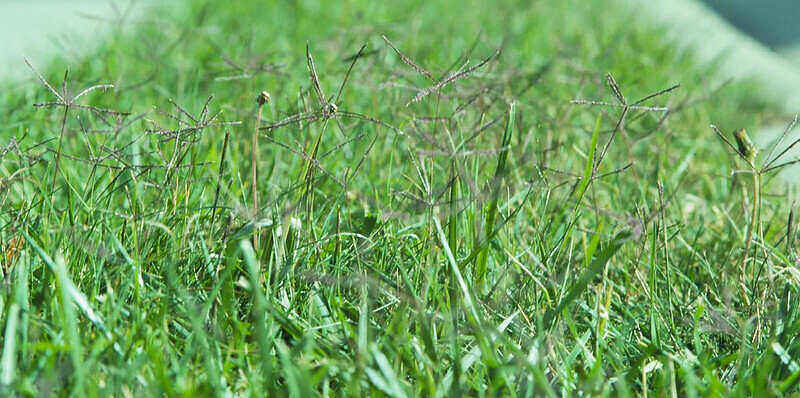
Photo Credit: Matt Levin / Flickr / CC BY-SA 2.0
Bermudagrass is a warm-season grass that flourishes best in full-sun areas. Although not native to the United States, it now thrives throughout the South due to its ability to tolerate high heat.
Because of its durability, bermudagrass is a common choice for high-traffic areas like active backyards, golf courses, and athletic fields. It tolerates San Antonio’s clay soils, high-salt soils, and drought conditions. Because it can survive with as little as 24 inches of annual rain, it’s unlikely that your lawn will need additional watering.
For optimal greenery, choose an effective fertilizer. Considered high maintenance, bermudagrass tends to build up thatch and invade flower beds. It can be such a hassle that gardeners have nicknamed it the “devil’s grass.” It will also need frequent mowing, as often as twice a week, and is susceptible to disease and pests.
Due to its durability and fast, thick growth, bermudagrass is considered to be one of the more attractive warm-season grass types.
- Classification: Warm-season grass
- Spreads by: Stolons and rhizomes
- Shade tolerance: Poor; thrives in full sun
- Drought tolerance: High
- Traffic tolerance: High foot and vehicle tolerance; quickly recovers from damage
- Maintenance needs: High; rapid growth causes high thatch levels and flower bed invasion; requires mowing one to two times per week
- Recommended mowing height: Bermudagrass should be cut at a height of 1 to 2 inches.
Bermudagrass Quick Guide
Pros
- Grows quickly and creates dense ground cover
- High drought tolerance (great for San Antonio’s low rain years)
- Grows well in San Antonio’s high clay soil
- Often used for high-traffic areas due to its ability to recover quickly from damage
Cons
- Grows aggressively and is known to invade flower beds, creating the nickname the “devil’s grass”
- Tends to be high-maintenance due to its excessive growth and the need for frequent mows
- Fails to thrive in cooler temperatures and shade
Grass Seed Options:
– Pennington Bermudagrass Bare Spot (5 lb. bag)
– Pennington Smart Seed Bermudagrass Mix (8.75-lb. bag)
– Scotts Turf Builder Bermudagrass (10-lb. bag)
– Hancock Seed Co. Bermudagrass (50-lb. bag)
Buffalograss
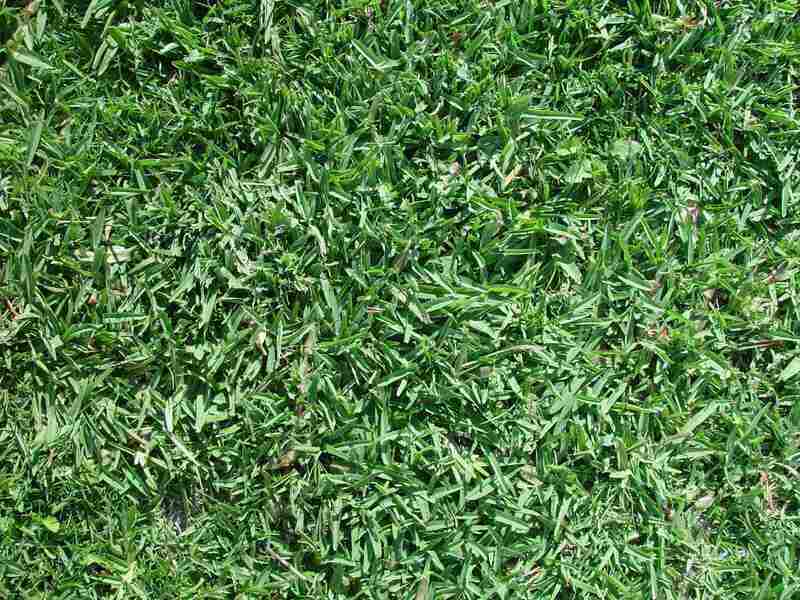
Photo Credit: Titus Tscharntke / Pixnio / CC0
Buffalograss is a warm-season grass that is native to North America. This grass has a high tolerance for colder temperatures and doesn’t enter dormancy as early as other warm-season grasses. With excellent drought resistance, buffalograss grows best in areas with 25 inches of rain or less.
Because San Antonio averages 30 inches of annual rain, your lawn may need additional maintenance to keep out weeds that tend to form with extra water. However, this turf won’t require additional irrigation.
Buffalograss is a popular choice throughout Texas, including nearby Austin. This turf can survive on minimal fertilizer and mowing and typically has a long winter dormancy. With thin, deep-growing roots, buffalograss succeeds in clay and compacted soil. Although it can tolerate some activity, it is not suited for high traffic areas.
Like many types of grass, buffalograss can be vulnerable to pests and diseases, especially false smut, a fungal disease that affects germination.
- Classification: Warm-season grass
- Spreads by: Stolons
- Shade tolerance: Low
- Drought tolerance: High
- Traffic tolerance: Low to moderate
- Maintenance needs: Unless overwatered, buffalograss is a low-maintenance turf. It will survive in high heat and cold as well as drought conditions. Mowing is only needed once every seven to 14 days.
- Recommended mowing height: 2 to 3 inches
Buffalograss Quick Guide
Pros
- Low-maintenance: needs little fertilizer, infrequent mowing, and needs weeding only in times of higher rainfall.
- High tolerance to heat, cold, and drought conditions
- Grows well in San Antonio’s high clay areas
- Successful ground cover without flower bed invasion
- Stays greener longer
Cons
- Only moderate tolerance to traffic
- With average rainfall higher than optimal, occasional weeding will be necessary.
- Doesn’t thrive in shaded areas
Grass Seed Options:
– Everwilde Farms Buffalograss Seeds (1 lb. of seeds)
– Scotts Pursue Buffalograss with Natural Seed (1 lb. of seeds)
– Outsidepride Perennial Buffalo Grass Seed (2 lb. of seeds)
Centipedegrass
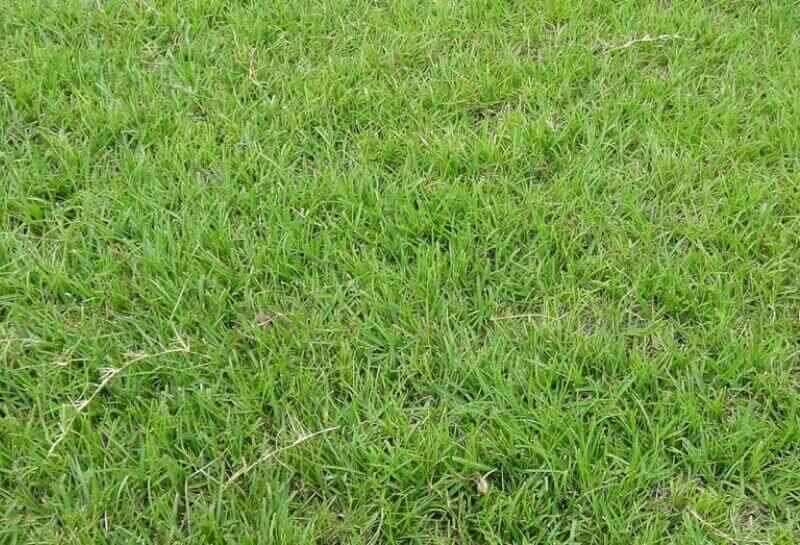
Photo credit: Michael Rivera / Wikimedia Commons / CC BY-SA 4.0
Centipedegrass is known for its high heat tolerance and thick, dense ground cover. It doesn’t handle drought as well as it does the heat but will quickly turn green again with irrigation. Additional watering is needed, especially in times of low rain. Light green in color and common throughout the South, it has low fertilization and mowing needs.
Centipedegrass is more susceptible to the cold than other warm-season grasses but recovers in higher temperatures. However, a rare Texas deep freeze can prove to be fatal. Although it grows best in the sun, it tolerates moderate shade and is best for lounging due to its low traffic tolerance.
Because this grass can be sensitive to weed-and-feeds, check labels before applying. Homeowners need to watch out for damaging San Antonio lawn diseases as well as pests, including mole crickets, chinch bugs, and billbugs. Although it doesn’t grow particularly well in high clay areas, centipedegrass does flourish in San Antonio’s sandy soil.
- Classification: Warm-season grass
- Spreads by: Stolons
- Shade tolerance: Grows best in a full sun area, but it can tolerate moderate shade.
- Drought tolerance: Moderate; can recover with irrigation
- Traffic tolerance: Low
- Maintenance needs: Low; needs limited weeding, mowing, and fertilization. An iron supplement will help keep it green. This turf is slow-growing, so mowing is only needed once every seven to 14 days.
- Recommended mowing height: The ideal height is 1.5 to 2.5 inches.
Centipedegrass Quick Guide
Pros
- Grows well in sand, common in San Antonio
- Exceptionally high heat tolerance
- Low maintenance. Little weeding, fertilization, and mowing once every seven to 14 days
- Can handle the shade
- Thick, dense ground cover without invading flower beds
Cons
- Low traffic tolerance
- Moderate drought tolerance
- Susceptible to certain pests
Grass Seed Options:
– Gulf Kist Coated Centipedegrass Seeds (1 lb.)
– Scotts EZ Seed Patch and Repair Centipedegrass (3.75 lbs.)
– TifBlair Centipedegrass (5-lb. bag)
– Pennington Centipedegrass and Mulch (5-lb. bag)
St. Augustinegrass
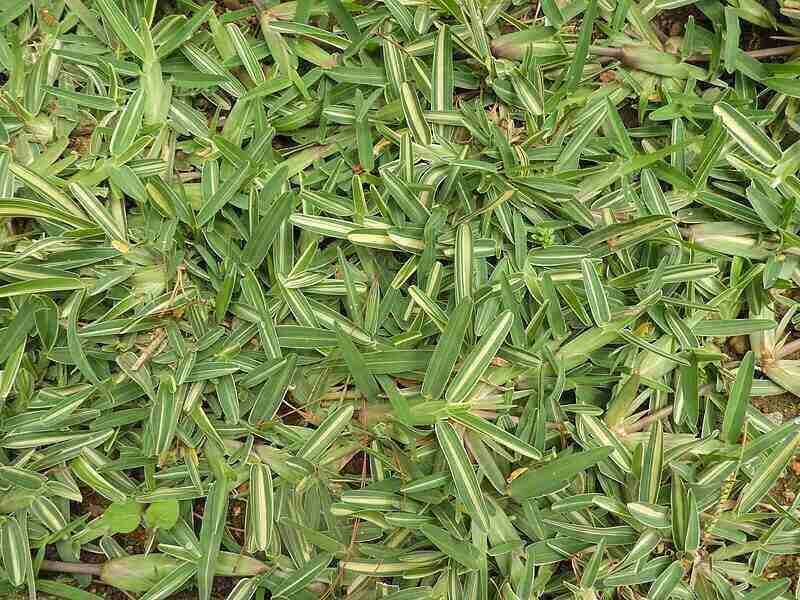
Photo Credit: Yercaud-elango / Wikimedia Commons / CC BY-SA 4.0
Common in tropical and subtropical areas, St. Augustinegrass is a warm-season grass that grows in the southernmost states. A dark green grass, this turf emerges in a thick, carpet-like sod that crowds out most other grasses and weeds and has earned the nickname “carpet grass.”
Because of its strong, thick growth, it can develop thatch and invade flower beds if not managed. It flourishes in areas with good drainage, like San Antonio’s sandy soil areas. Considered a moderate maintenance turf, it is vulnerable to drought, making irrigation necessary when rainfall is less consistent.
Due to its wide, thick leaves, using a sharp blade when mowing is best to prevent tearing. St. Augustinegrass is vulnerable to the cold and needs monitoring when reemerging from dormancy. A regular, effective fertilization schedule will ensure steady growth, making your lawn green and beautiful.
Although more resistant to pests than other grasses, aggressive insects such as chinch bugs can become a problem. St. Augustinegrass has a moderate tolerance to traffic and shade.
- Classification: Warm-season grass
- Spreads by: Stolons
- Shade tolerance: Moderate
- Drought tolerance: Moderate; will need additional irrigation in times of low rainfall
- Traffic tolerance: Moderate
- Maintenance needs: Moderate; St. Augustinegrass will need dethatching, regular fertilization, and irrigation. It has been known to invade flower beds if left unchecked. During peak growing season, cutting every seven to 10 days is recommended.
- Recommended mowing height: Mow St. Augustine grass at a height of 3.5 to 4 inches. Use the One-Third Rule, being careful not to cut more than one-third of the leaf when mowing. Cutting grass too short will cause stress and yellow your lawn.
St. Augustinegrass Quick Guide
Pros
- Grows in thick and carpet-like. Nickname is “carpet grass”
- Tolerates moderate shade
- Moderate maintenance creates a lush lawn
- Less vulnerable to insects than most other grasses
- Thrives in San Antonio’s sandy soils
Cons
- It will likely need consistent irrigation
- Fertilization is a necessity, especially in the establishment stage
- Must be careful to monitor for frost when emerging from dormancy, for flower bed invasion, and to use proper mowing techniques for optimal lawn health
Grass Plug Options:
– Seed Ranch St Augustine Seville Grass Plugs (2 Trays)
– Seed Ranch St Augustine Floratam Grass Plugs (2 Trays)
Zoysiagrass
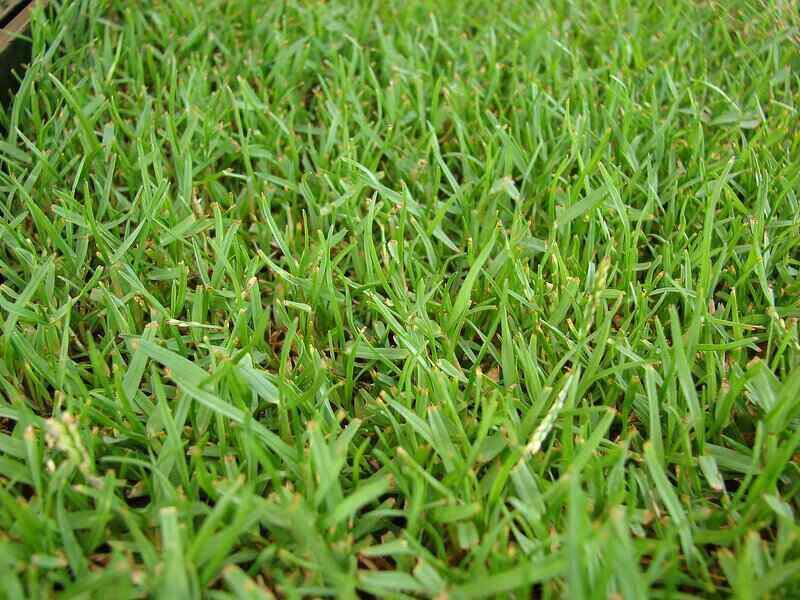
Photo Credit: Forest & Kim Starr / Wikimedia Commons / CC BY 3.0 US
Primarily found in southernmost states like Texas, Zoysiagrass is a warm-season grass with thin leaves that sprouts soft and thick. This turf is adaptable and has a high salt tolerance, making it a great choice for various soil types, including San Antonio’s clay and sandy soils.
Its deep thick root system ensures water and oxygen absorption but can cause flower bed invasion if left to grow unchecked. This grass has a wide range of temperature tolerance, making it more resistant to cold than other warm-season grasses. It is one of the first grasses to reemerge in the spring.
Although Zoysiagrass is drought-resistant, it tends to turn brown with low rainfall but recovers when irrigated. This grass requires proper drainage but less fertilization. It is pest-resistant, so only the worst insects create a problem. Its slow growth means slower recovery from traffic damage, even though it tends to hold up well against activity.
Because of its durability, this grass is used both in residential and commercial areas and is often seen on golf greens and parks. This grass has a low to moderate tolerance for shade and repels weeds. However, due to its thick growth, it can develop thatch. Despite its slower growth rate, it will still need mowing about once a week, depending on the time of year.
- Classification: Warm-season grass
- Spreads by: Stolons and rhizomes
- Shade tolerance: Low to moderate
- Drought tolerance: Moderate; will turn brown, but recovers quickly
- Traffic tolerance: High traffic tolerance, but recovers slowly from damage
- Maintenance needs: Moderate; Zoysiagrass will need irrigation in times of low rainfall and monitoring for flower bed invasion and high levels of thatch. This turf is pest and disease resistant and requires less fertilization than most other grasses. Mowing once a week is recommended.
- Recommended mowing height: Ideal height is 2 inches
Zoysiagrass Quick Guide
Pros
- Moderate shade and high traffic tolerance
- Pest and disease resistant
- Recovers quickly from drought
- Grows well in a variety of soils, including San Antonio’s clay and sandy soils
- Tolerates cold better than most warm-season grasses
Cons
- Recovers slowly from traffic damage
- Will require moderate maintenance, such as watering and monitoring closely for flower bed invasion and thatch
- Turns brown with drought
Grass Plug and Seed Options:
– Zoysia Plugs (50 Large Grass Plugs)
– Zoysia Plugs (50 Full & Lush Grass Plugs)
– Zoysia Plugs (100 Plugs)
– Zoysia Emerald Grass Seeds (1/8 lb. of seeds)
– Zenith Zenith Grass Seeds (1/8 lb. of seeds)
How to Choose the Best Grass in San Antonio
Heavy-Traffic vs. Low-Traffic Areas
First, how do you plan to use your lawn? Some grass types hold up well against heavy traffic, like backyard gatherings or a football match on Thanksgiving. However, other turfs are best suited for low activity, such as reading in the sun or peacefully observing San Antonio’s gorgeous skyline.
Best grass types for high-traffic areas:
- Bermudagrass, Zoysiagrass (recovers slowly from damage)
Best grass types for low to moderate traffic:
- Buffalograss, bahiagrass, centipedegrass, St. Augustinegrass
How Much Maintenance?
Another consideration is the time you have to devote to lawn maintenance. Some grass types need frequent mowing, others might need extra water, and others are susceptible to pests and disease. You may need to watch for flower bed invasions, weeds, or slow stress recovery.
High-maintenance grasses:
- Bermudagrass
Low- to moderate-maintenance grasses:
- Buffalograss, bahiagrass, centipedegrass, St. Augustinegrass, Zoysiagrass
Soil Type
Another aspect to think about is your soil type. San Antonio tends to have heavy clay or difficult sandy soils. If you have clay, you’ll need grasses that have a fibrous root system that draws water and scarce oxygen from the compacted ground. Sandy soil doesn’t hold water and nutrients well, so you may need turf with low irrigation needs.
Tolerates clay soil:
- Bahiagrass (either clay or sandy), bermudagrass, buffalograss, Zoysiagrass (either clay or sandy)
Tolerates sandy soil:
- Bahiagrass (either clay or sandy), centipedegrass, St. Augustinegrass, Zoysiagrass (either clay or sandy)
Let Someone Else Mow in San Antonio
If you’re preparing your lawn for new grass, replacing existing turf, or need lawn repair, hire a professional for the best results. Contact a local San Antonio lawn care professional for highly rated lawn care experts that will help you decide on the best grass type, giving you the lawn of your dreams in no time.
LawnStarter participates in the Amazon Services LLC Associates Program, an affiliate advertising program. LawnStarter earns revenue from products promoted in this article.
Main Image Credit: Brent Eckley / Flickr / CC BY 2.0